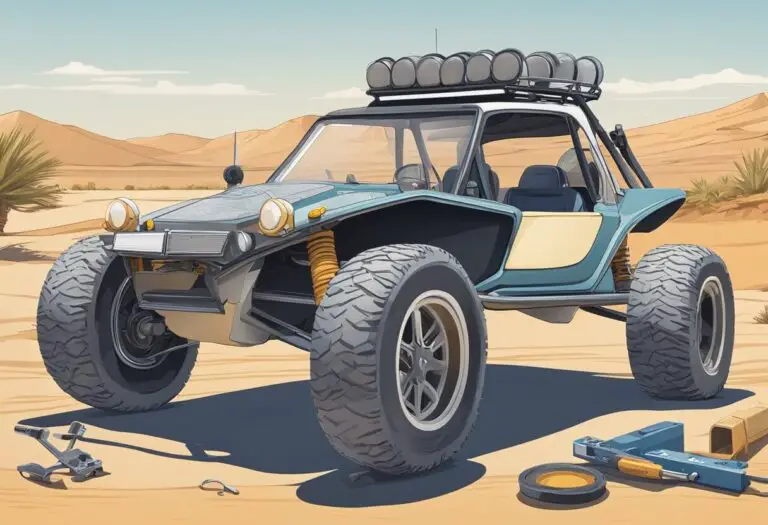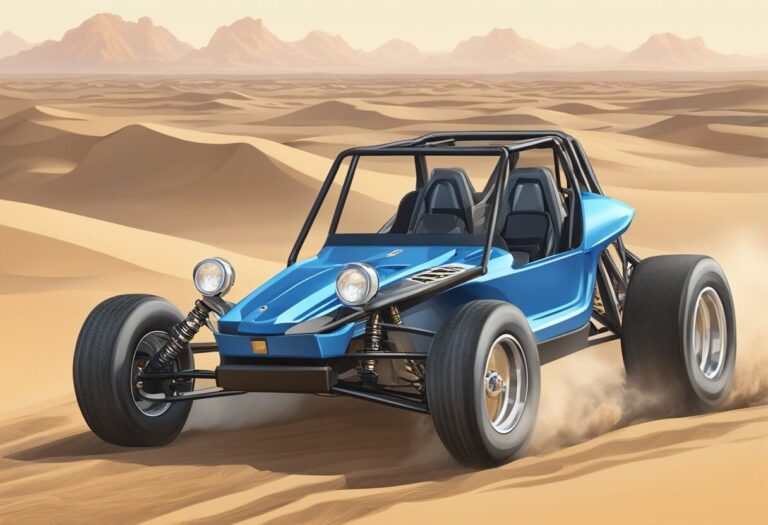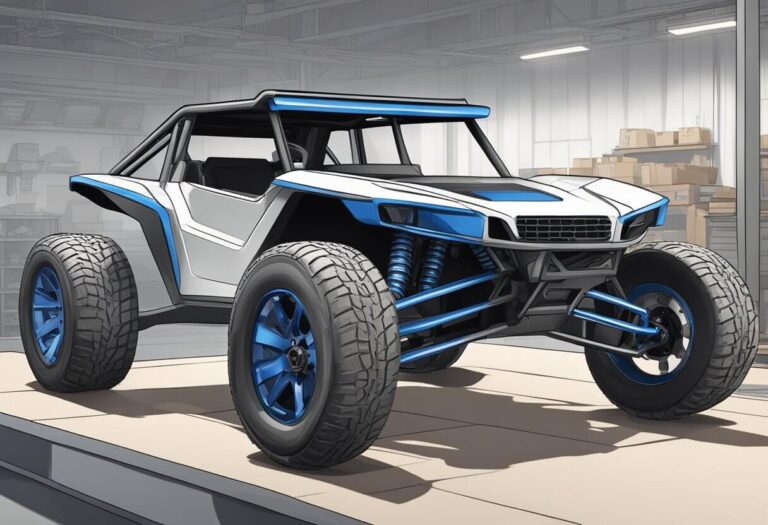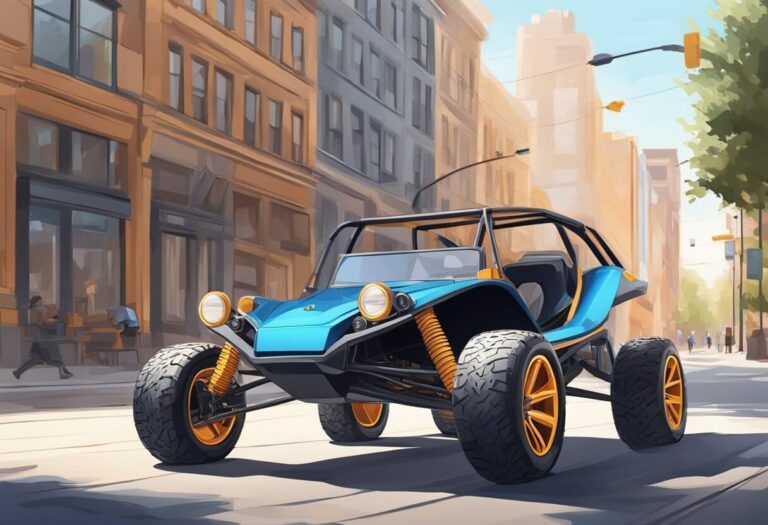VW Dune Buggy Kits: Your Ultimate Guide

VW dune buggy kits are a popular choice for those who want to experience the thrill of off-roading in a unique vehicle. These kits allow enthusiasts to build their own dune buggy using a Volkswagen chassis and engine, along with a fiberglass body designed specifically for off-road use.
There are several different types of VW dune buggy kits available, ranging from basic kits that include just the body and chassis components, to more complete kits that include everything needed to build a fully functional dune buggy. Some kits even include custom suspension components and other upgrades to improve the vehicle’s off-road performance.
For those who are interested in building their own dune buggy, VW dune buggy kits offer an affordable and fun way to get started. With a little bit of mechanical know-how and some basic tools, anyone can build a unique off-road vehicle that is sure to turn heads on the trails.
History of VW Dune Buggies
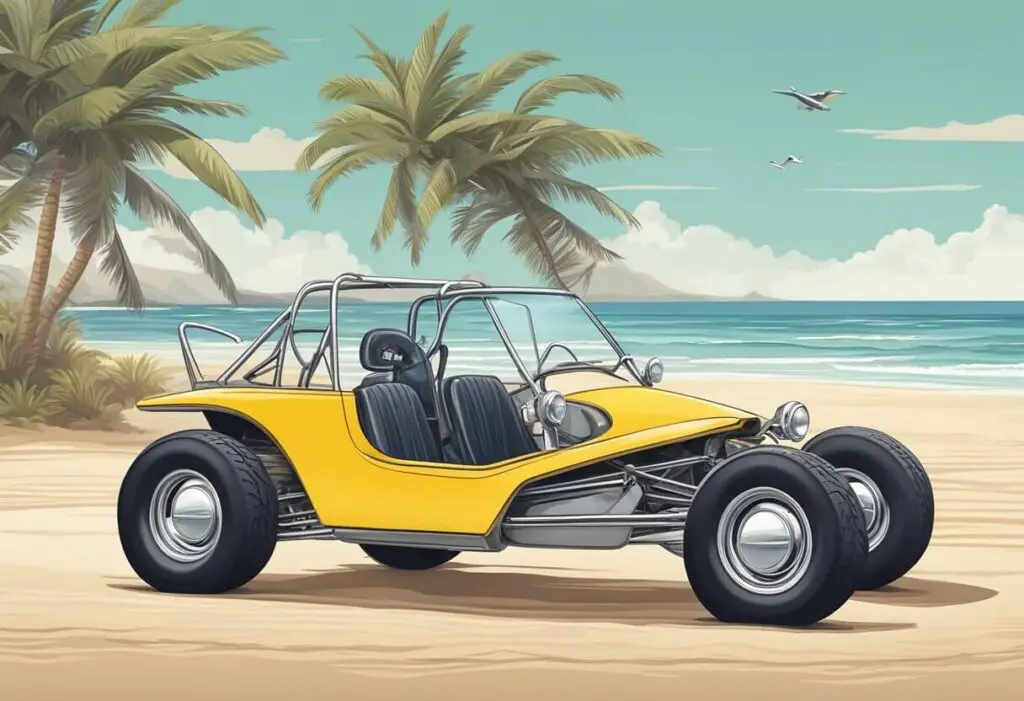
Volkswagen dune buggies have a rich history that dates back to the 1960s. The original dune buggies were built on the chassis of the Volkswagen Beetle, which was a popular car at the time. The Beetle’s rear-engine design made it an ideal candidate for off-road use, as it provided excellent traction and stability on sand and other loose surfaces.
The first production dune buggy kit was called the “Sportster,” and it was introduced by the California-based company, Meyers Manx, in 1963s. The Sportster was a tube-frame and sheet metal kit that was designed to be lightweight and dune-ready. The kit was an instant success, and it quickly became the most popular dune buggy kit on the market.
Over the years, many other companies began producing dune buggy kits for the Volkswagen Beetle chassis, including EMPI, Berrien Buggy, and Fiber-Tech. These kits varied in design and features, but they all shared the same basic concept of a lightweight, off-road vehicle that was built on the reliable and affordable Volkswagen Beetle platform.
Today, Volkswagen dune buggies are still popular among off-road enthusiasts and collectors. Many people enjoy restoring and customizing these classic vehicles, while others prefer to build their own dune buggies from scratch using modern materials and technology. Whatever your preference, the history of Volkswagen dune buggies is a fascinating story that continues to inspire and captivate people all over the world.
Types of VW Dune Buggy Kits
When it comes to VW dune buggy kits, there are two main types: street legal kits and off-road kits. Each type has its own unique features and benefits, making it important to choose the right kit for your needs.
Street Legal Kits
Street legal kits are designed to meet all of the necessary requirements for driving on public roads. These kits typically include features such as headlights, turn signals, brake lights, and mirrors. They also include safety features such as seat belts and roll cages.
One popular street legal kit is the Meyers Manx. This kit is known for its high-quality construction and excellent on-road performance. It comes with all of the necessary features for driving on public roads and is easy to assemble.
Off-Road Kits
Off-road kits are designed for those who want to take their dune buggy off the beaten path. These kits typically include features such as off-road tires, heavy-duty suspension, and skid plates. They are also designed to be lightweight and agile, making them ideal for navigating rough terrain.
One popular off-road kit is the Bandit Dune Buggies kit. This kit is known for its rugged construction and excellent off-road performance. It comes with all of the necessary features for off-road driving and is easy to assemble.
Overall, choosing the right VW dune buggy kit depends on your specific needs and preferences. Whether you’re looking for a street legal kit or an off-road kit, there are plenty of options available to suit your needs.
Components of a Dune Buggy Kit
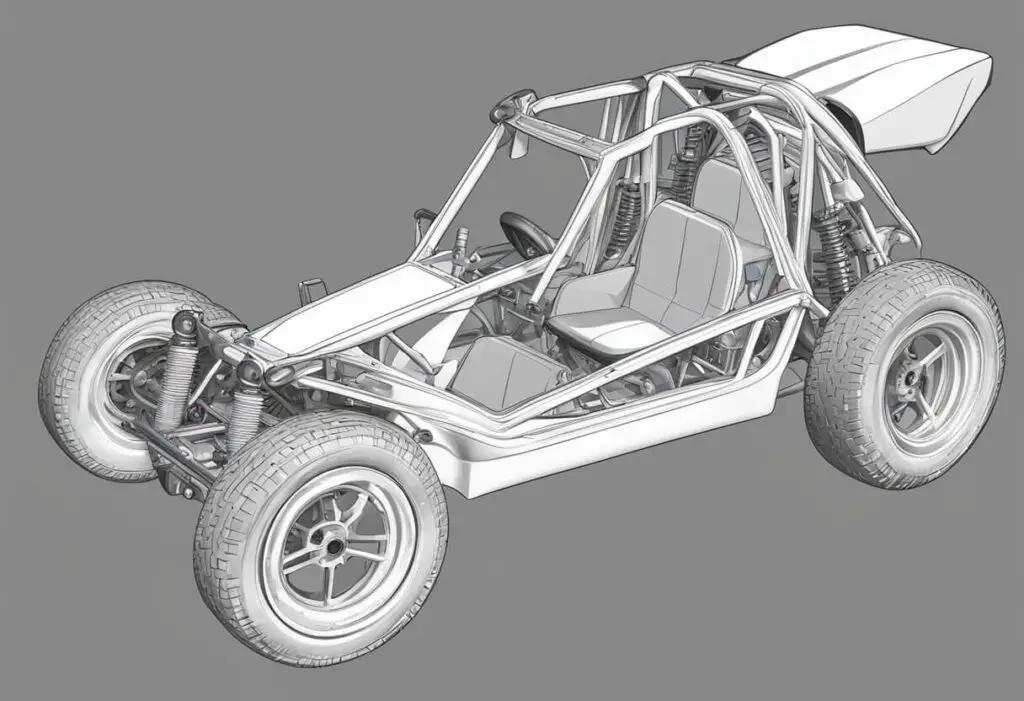
When it comes to building a dune buggy, a kit is an excellent option for those who want to avoid the hassle of sourcing all the necessary parts individually. Dune buggy kits typically come with all the components required to build a complete vehicle, including a chassis, an engine, suspension, body panels, and safety equipment. In this section, we will explore each of these components in more detail.
Chassis
The chassis is the backbone of any dune buggy, and it is responsible for supporting the weight of the vehicle and providing a platform for all the other components. Dune buggy kits typically come with a pre-fabricated chassis that is designed to fit a specific engine and body style. The chassis may be made of steel or aluminum, and it may come in different lengths and configurations depending on the intended use of the vehicle.
Engine
The engine is the heart of any dune buggy, and it is responsible for providing the power required to propel the vehicle over sand dunes and other off-road terrain. Dune buggy kits may come with a new or used engine, and it may be air-cooled or liquid-cooled depending on the manufacturer. The engine may also come with a transmission, which is responsible for transferring power to the wheels.
Suspension
The suspension is responsible for providing a smooth ride over rough terrain and absorbing shocks from jumps and bumps. Dune buggy kits may come with a pre-fabricated suspension system that includes shocks, springs, and other components. The suspension may be adjustable to accommodate different driving conditions and preferences.
Body Panels
The body panels are responsible for providing protection from the elements and giving the dune buggy its distinctive look. Dune buggy kits may come with pre-fabricated body panels that are designed to fit the chassis and engine. The body panels may be made of fiberglass, aluminum, or other materials, and they may come in different colors and styles.
Safety Equipment
Safety should always be a top priority when building a dune buggy, and dune buggy kits may come with various safety equipment such as seat belts, roll bars, and helmets. It is important to ensure that all safety equipment is installed correctly and meets the necessary safety standards.
In conclusion, dune buggy kits are an excellent option for those who want to build a dune buggy without the hassle of sourcing all the necessary parts individually. Dune buggy kits typically come with all the components required to build a complete vehicle, including a chassis, an engine, suspension, body panels, and safety equipment.
Building Your Dune Buggy
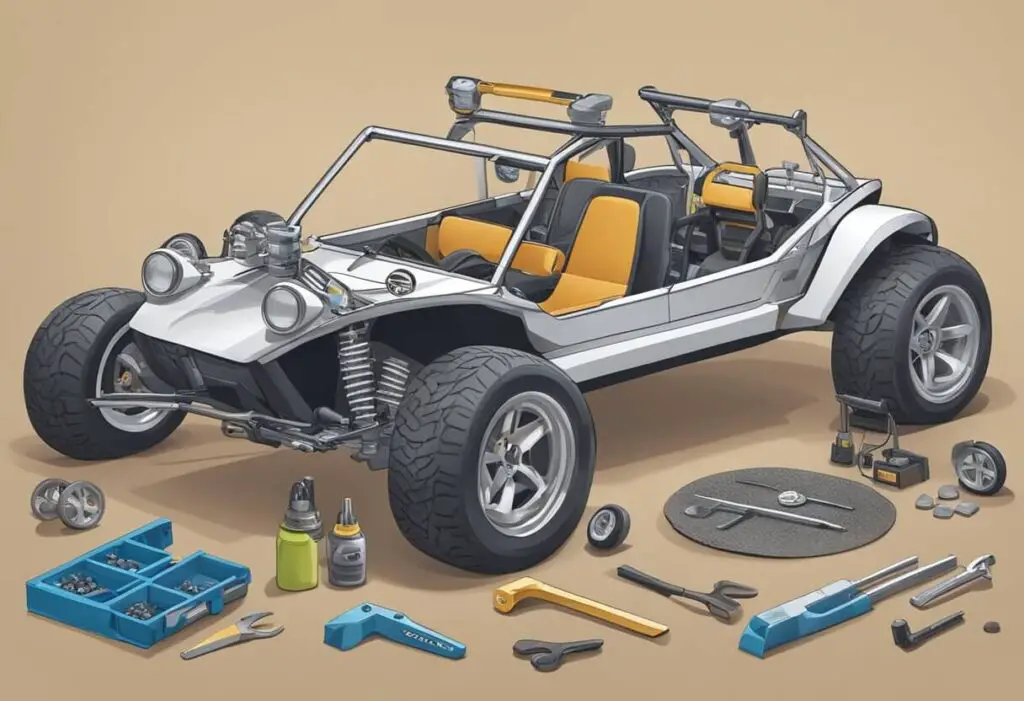
Assembly Instructions
Building a dune buggy from a kit can be a fun and rewarding experience. Most VW dune buggy kits come with detailed instructions that guide builders through the process. However, it’s important to note that assembly instructions may vary depending on the manufacturer and model of the kit.
Before starting the assembly process, it’s recommended to read through the instructions thoroughly and familiarize oneself with the different components and tools required. Assemble the parts in the order specified in the instructions, and double-check that each step is completed before moving on to the next.
Customization Options
One of the benefits of building a dune buggy from a kit is the ability to customize it to one’s liking. Many VW dune buggy kits offer various customization options, such as different colors, body styles, and accessories.
Some popular customization options include adding a roll cage or a windshield, upgrading the suspension, or installing a more powerful engine. Before making any modifications, it’s important to check with the manufacturer to ensure that the modifications are compatible with the kit.
Required Tools and Skills
Building a dune buggy from a kit requires some basic mechanical skills and tools. Some of the tools required include a socket set, wrenches, pliers, and a torque wrench. It’s also recommended to have access to a welder and a grinder to complete certain steps in the assembly process.
If one doesn’t have the necessary skills or tools, it’s recommended to seek the help of a professional mechanic or fabricator. It’s important to ensure that the dune buggy is assembled correctly and safely to prevent any accidents or malfunctions on the road.
Cost Considerations
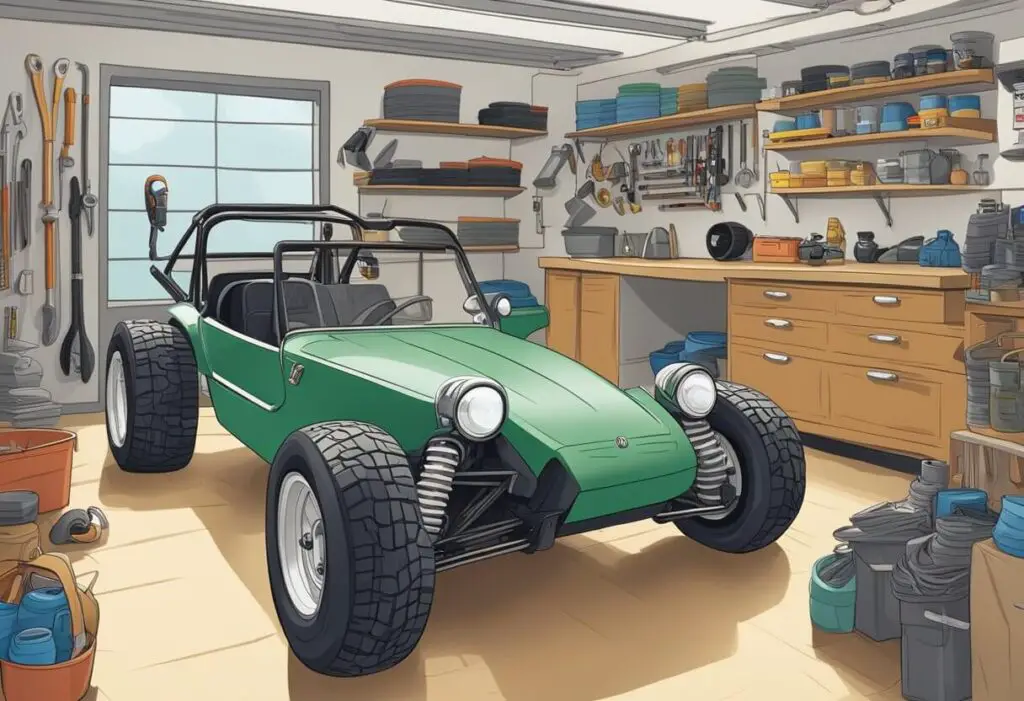
Kit Pricing
When considering the cost of a VW dune buggy kit, it’s important to keep in mind that prices can vary widely depending on the manufacturer and the specific model. According to the search results, an average-sized, street-legal dune buggy kit can cost anywhere from $5,000 up to $30,000, depending on the condition and the manufacturer. The Meyers Manx website lists their buggy kit at $5,995, with an all-electric version in development.
It’s also worth noting that some manufacturers may offer different levels of kits, with varying degrees of completeness. For example, a basic kit may only include the body and dashboard, while a more expensive kit may include additional components such as a chassis, suspension, and steering.
Additional Expenses
In addition to the cost of the kit itself, there are several other expenses to consider when building a dune buggy. These can include:
- Tools: Depending on the level of completeness of the kit, additional tools may be required to complete the build. This can include specialized tools such as welding equipment or sandblasting equipment.
- Engine and Transmission: Most dune buggies are powered by a Volkswagen air-cooled engine, which can be sourced from a variety of places. However, it’s important to keep in mind that a rebuilt or upgraded engine can add significant cost to the build.
- Paint and Bodywork: While some kits may come with a gel-coat finish, many builders choose to paint their dune buggies to their own specifications. This can add additional cost, especially if bodywork is required to repair any damage to the fiberglass body.
- Registration and Insurance: Depending on the jurisdiction, a dune buggy may need to be registered and insured like any other vehicle. This can add additional cost, especially if modifications to the vehicle are required to meet local regulations.
Overall, building a VW dune buggy can be a fun and rewarding project, but it’s important to carefully consider the cost and plan accordingly. By taking the time to research the available options and estimate the total cost of the project, builders can ensure that they end up with a dune buggy that meets their needs and fits their budget.
Legal Requirements for On-Road Use

Registration and Titling
Before hitting the road with a VW dune buggy kit, it is important to ensure that the vehicle is registered and titled. The registration process may vary by state, but generally, the vehicle must meet certain requirements to be eligible for on-road use.
One option is to remove the VIN tag from the vehicle that the motor is taken from and register it as that type of vehicle. Alternatively, the vehicle can be registered as a self-assembled vehicle. It is important to check with the local Department of Motor Vehicles (DMV) for specific requirements and regulations.
Safety Regulations
To make a dune buggy street legal, certain safety features must be installed to prevent accidents and ensure the safety of both the driver and passengers. The installation of seat belts is a crucial step in making the vehicle street legal. Other safety features may include headlights, turn signals, brake lights, and mirrors.
In addition to safety features, emissions regulations must also be met. Most places require at least an evaporative emissions system for current vehicles. It is important to check with the local DMV for specific emissions regulations.
It is also recommended to have the dune buggy inspected by a certified mechanic to ensure that it meets all safety and emissions requirements before taking it on the road. By following these legal requirements and safety regulations, enthusiasts can enjoy exploring both off-road trails and city streets with their VW dune buggy kit.
Maintenance and Upkeep
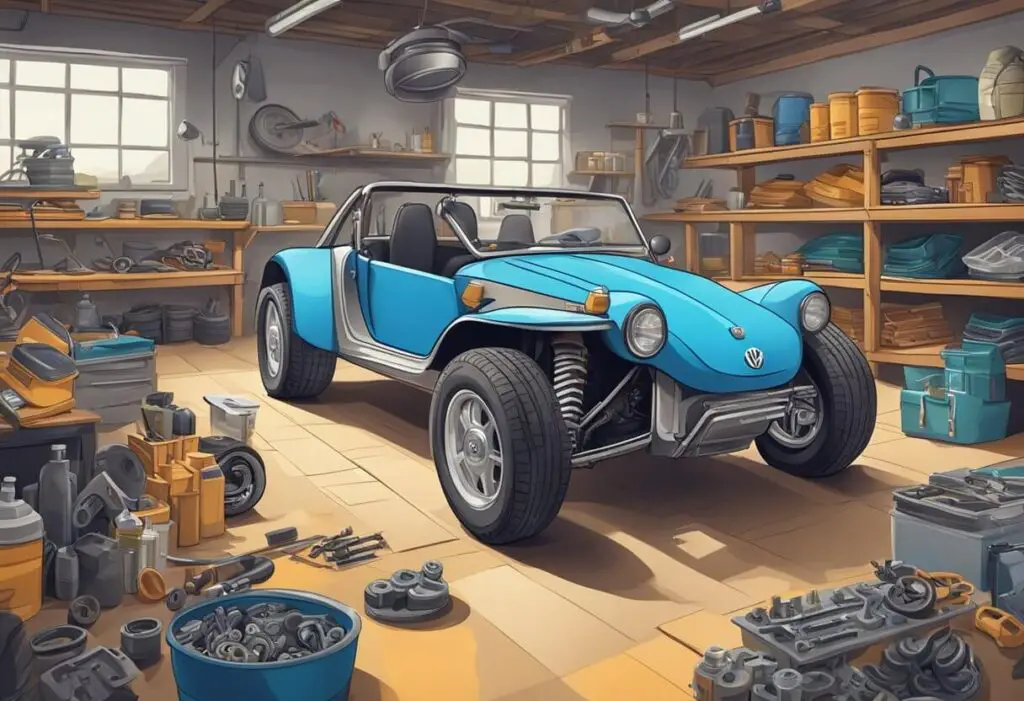
Routine Maintenance
To keep your VW dune buggy kit running smoothly, it is essential to perform routine maintenance. This includes regular oil changes, checking the air filter, and inspecting the brakes. It is also important to keep the tires properly inflated and to check them for wear and tear.
In addition, the electrical system should be checked periodically to ensure that all wires are connected properly and that there are no frayed or damaged wires. The battery should also be checked to ensure that it is holding a charge and that the terminals are clean and free of corrosion.
Long-Term Care
To ensure the longevity of your VW dune buggy, it is important to take good care of it. This includes storing it in a dry, covered area to protect it from the elements. It is also important to keep it clean and free of dirt and debris, which can cause damage to the paint and other components.
Regularly inspect the suspension, steering, and other mechanical components for wear and tear. Replace any worn or damaged parts as soon as possible to prevent further damage to the vehicle.
Finally, it is important to follow the manufacturer’s recommended maintenance schedule for your specific model of VW dune buggy kit. This will ensure that the vehicle is always running at its best and will help to prevent costly repairs down the road.
Community and Resources
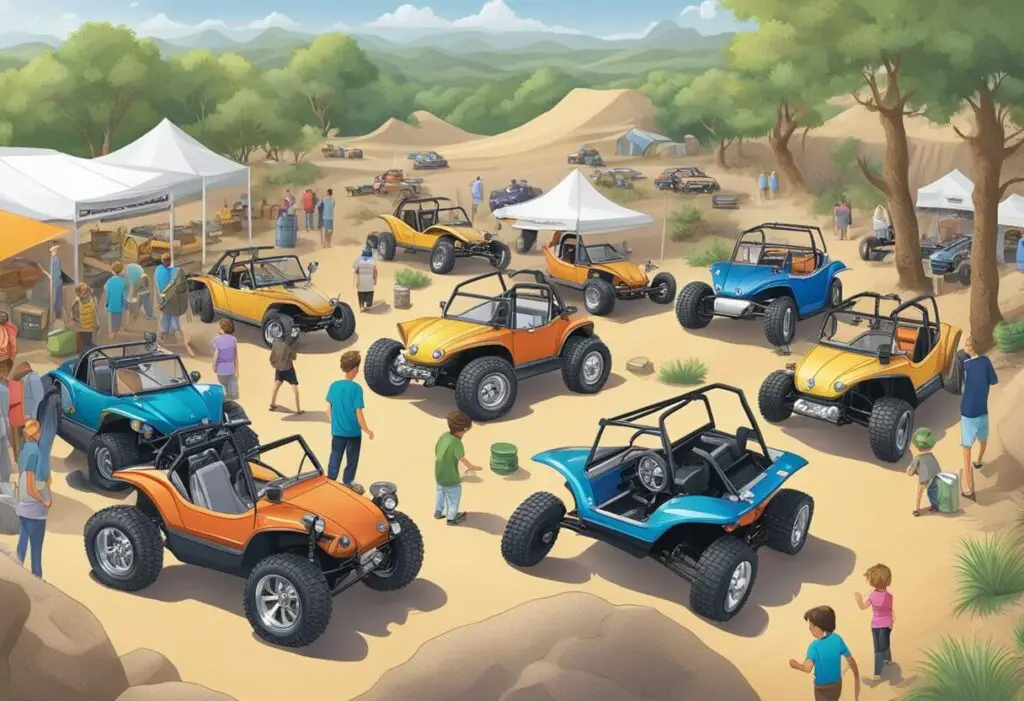
Forums and Clubs
For those interested in VW dune buggy kits, there are several online forums and clubs available to join. These communities provide a wealth of information and resources for enthusiasts, including tips on building and maintaining dune buggies, as well as a place to connect with fellow enthusiasts.
One such forum is the Dune Buggy Archives, which has been around since 1995 and is one of the oldest online communities for dune buggy enthusiasts. The forum has a wealth of information on all aspects of dune buggy building and maintenance, from engine swaps to suspension upgrades.
Another popular forum is the VW Dune Buggy Club, which has over 3,000 members worldwide. The club hosts events and gatherings throughout the year, and members can connect with other enthusiasts to share tips and advice.
Events and Gatherings
In addition to online communities, there are also several events and gatherings for dune buggy enthusiasts. These events provide an opportunity to meet other enthusiasts, show off your buggy, and learn from experts in the field.
One of the largest events is the Buggy Bash, which takes place annually in Silver Lake, Michigan. The event attracts hundreds of dune buggy enthusiasts from around the country and features a variety of activities, including trail rides, drag races, and a car show.
Another popular event is the Manx on the Banx, which takes place on the beaches of Nantucket Island, Massachusetts. The event is dedicated to the Meyers Manx, one of the most iconic dune buggies, and features a parade of Manx buggies along the beach.
Overall, the dune buggy community is a tight-knit group of enthusiasts who are passionate about building and driving these unique vehicles. Whether you’re a seasoned veteran or just starting out, there are plenty of resources available to help you get started and connect with other enthusiasts.

